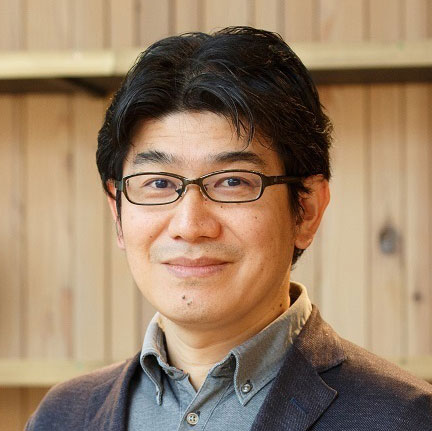Future food
As the food tech market booms Io Kawauchi speaks with Hirotaka Tanaka and Akiko Okada, authors of a new book on the topic, about Japan’s contribution to the revolution brewing in the world’s kitchens
The food industry is one of the largest in the world – after all, everybody eats. But are we producing and consuming food the right way, especially considering the impact food production has on the climate and food consumption has on public health? Food tech is about using technology to make food better – smarter, greener, healthier, less wasteful, more efficient and more sustainable. It isn’t only about ingredients – it’s also about cooking methods, cookware and logistics including deliveries, as well as robotics. Global startup investment in food tech reached approximately $15 billion in 2019 – a figure about five times larger than five years earlier.
Japan usually has its finger on the pulse of new technology, and food tech is no exception. A number of startups have appeared in recent years, while major food and consumer electronics companies as well as real estate developers, including Ajinomoto, Panasonic and Tokyo Tatemono, have also entered the market.


Hirotaka Tanaka and Akiko Okada have been watching these developments with interest. As the co-authors of Food Tech Revolution: The Evolution and Redefinition of Food, they have charted the progress made in Japanese food tech. Asked which products excite them, Tanaka mentions Base Food, a startup that’s developed a brand of “complete nutritional food”, which provides a third of a person’s daily nutritional needs in one meal. Launched in 2016 by Shun Hashimoto, who previously worked in business development at IT firm DeNA, Base Food has created more nutritional versions of high-carb foods such as bread and pasta.
“An employee at Panasonic who was worried about her grandmother’s dysphagia came up with the idea of a device that would allow family members to eat together”
The new food technology
“Too many carbs can cause obesity and diabetes, while the ‘complete nutritional diet’ offered by Base Food could make society healthier,” says Tanaka. “They’ve been working with [food corporation] Ajinomoto to pursue better-tasting products.” Okada recommends the DeliSofter, a cooking device for dysphagia that allows you to soften dishes without changing their taste or appearance. It couldn’t be simpler – you press a button and hard, chewy food becomes soft and easy to eat. More than 100 types of dishes can be prepared, and the 500 units that were released in 2020 have sold out. Gifmo, a venture business by Panasonic, is now seeking to expand production. Okada reveals the DeliSofter’s origin story. “An employee at Panasonic who was worried about her grandmother’s dysphagia, a medical condition that makes swallowing difficult, came up with the idea of a device that would allow family members to eat the same food together [regardless of their circumstances],” she says. “That it was invented in Japan is no surprise, as we have a rapidly aging population.”
While the creations by startups such as Base Food and Gifmo are capturing the imagination, Tanaka points out that plenty of existing technologies in Japan have the potential to make inroads globally.
“Japanese food manufacturers have been developing so-called ‘design technology for deliciousness’ for a long time now, and they’re pretty good at it,” says Tanaka. “Technology adjusting taste, texture and aroma has been provided to food service companies and convenience stores. Just like Ajinomoto and Base Food have started to collaborate, this technology is starting to be shared with startups.”
Think local
Okada says that food tech can also help enhance local communities. He cites Obuse, a small town in Nagano which attracts around a million tourists each year by focusing local development around food production, especially its famous chestnuts. Food tech’s positive local impact has prompted investment in other green innovations. The town has now established an electric power company and started production for local consumption of energy through small-scale hydroelectric power generation.
“The sustainable development goals (SDGs) and the circular economy, in which waste is minimized by extracting as much as possible out of resources, are also components of food tech, and in this field we are focusing on the rural regions of Japan,” says Okada. “It may be difficult to apply these lessons to Japan as a whole, but it is possible to start small and be successful in a place like Obuse.”
“Japanese food manufacturers have been developing so-called ‘design technology for deliciousness’”
According to government data, investment in food tech in Japan was valued at ¥9.7 billion in 2019. The equivalent figure in the US was ¥957.4 billion. In other words, there’s room for development in a country famous for its food and its technology. When the two are combined, the potential is limitless.
“Japanese food manufacturers have been developing so-called ‘design technology for deliciousness’”
Hirotaka Tanaka
Managing Director, Sigmaxyz Inc.
Hirotaka Tanaka joined Sigmaxyz after working first at a major Japanese manufacturer and later at an international consulting firm. His fields of expertise include strategic planning, new business development, marketing, M&As, partnerships, and startup collaboration, with a particular focus on the food and restaurants market. He has given a number of talks and participated in seminars and symposia on the topic of food tech, and in 2018 he edited the book The Future of Food Tech. Last December, he organized Smart Kitchen Summit Japan 2020, an online food conference themed on food tech and other innovations in the field. In 2020, he co- wrote the book The Food Tech Revolution: The Evolution and Redefinition of Food.
Akiko Okada
Research/Insight Specialist, Sigmaxyz Inc.
A graduate of the Osaka School of International Public Policy, Akiko Okada began her career at Accenture and spent a decade at McKinsey & Company as a high-tech communications research specialist responsible for topics including industry-leading initiatives, strategy, and industry and company analysis for due diligence purposes. She joined Sigmaxyz in 2017 and currently works on market and consumer research with a focus on the intersection of food, science, and technology. She had a hand in establishing the Japanese version of the Smart Kitchen Summit, a global food tech conference, and supervised the 2018 book The Future of Food Tech. In 2020, she co-wrote the book The Food Tech Revolution: The Evolution and Redefinition of Food.